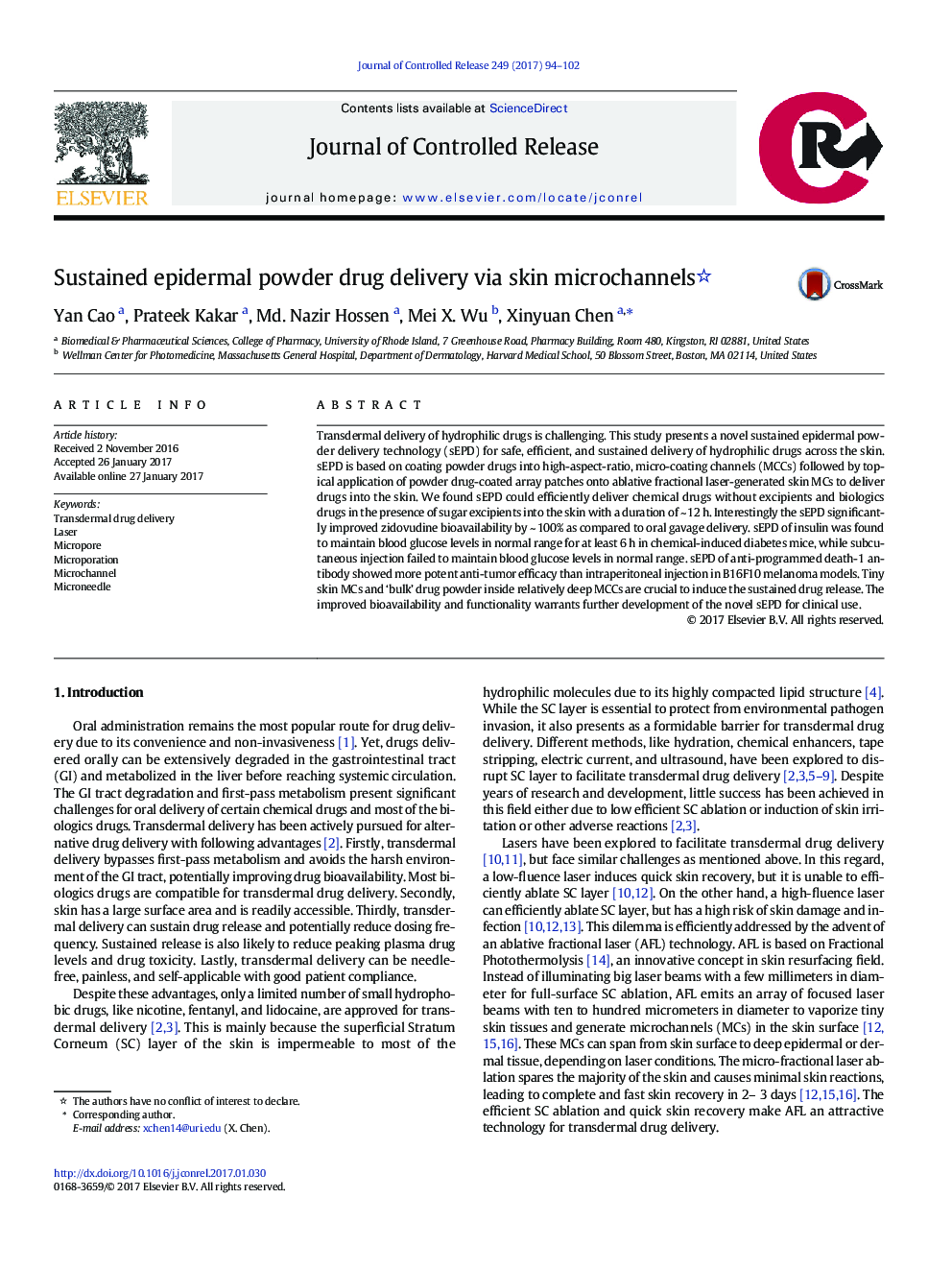| Article ID | Journal | Published Year | Pages | File Type |
|---|---|---|---|---|
| 5433850 | Journal of Controlled Release | 2017 | 9 Pages |
Transdermal delivery of hydrophilic drugs is challenging. This study presents a novel sustained epidermal powder delivery technology (sEPD) for safe, efficient, and sustained delivery of hydrophilic drugs across the skin. sEPD is based on coating powder drugs into high-aspect-ratio, micro-coating channels (MCCs) followed by topical application of powder drug-coated array patches onto ablative fractional laser-generated skin MCs to deliver drugs into the skin. We found sEPD could efficiently deliver chemical drugs without excipients and biologics drugs in the presence of sugar excipients into the skin with a duration of ~Â 12Â h. Interestingly the sEPD significantly improved zidovudine bioavailability by ~Â 100% as compared to oral gavage delivery. sEPD of insulin was found to maintain blood glucose levels in normal range for at least 6Â h in chemical-induced diabetes mice, while subcutaneous injection failed to maintain blood glucose levels in normal range. sEPD of anti-programmed death-1 antibody showed more potent anti-tumor efficacy than intraperitoneal injection in B16F10 melanoma models. Tiny skin MCs and 'bulk' drug powder inside relatively deep MCCs are crucial to induce the sustained drug release. The improved bioavailability and functionality warrants further development of the novel sEPD for clinical use.
Graphical abstractSustained epidermal powder delivery (sEPD) efficiently and sustainably delivers powder drugs coated inside micro-coating channels (MCCs) of a thick patch into the skin via tiny skin microchannels (MCs) owing to slow water evaporation from skin MCs to gradually dissolve topical drug powder, while control delivery induces more instant drug release.Download high-res image (190KB)Download full-size image
